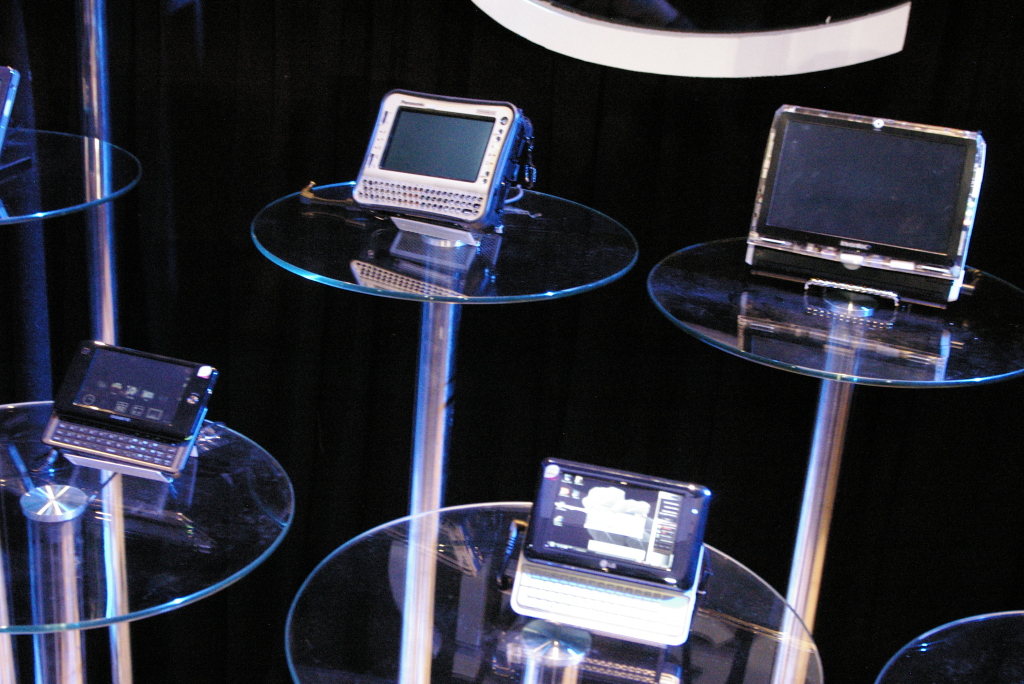Mobile internet devices to use 10 times less power

As we become increasingly mobilised with powerful handsets for communication and imaging, it seems the internet is just too powerful to contain. Even the iPhone offers a compromised connection, although it's the best experience we've seen on a handheld device.
But now Intel says the stage is set for the mobile internet device (MID) to bring full, uncompromised internet to the masses. Prepare yourself for devices from the likes of Sony, BenQ, Samsung and even Nokia – all fully enabled with 3G connections – to take the UK by storm in 2009. Intel's new system-on-a-chip architecture may also reduce power consumption to less than a tenth of its current level.
In our exclusive interview with Pankaj Kedia, Intel's Director for the Mobile internet Device program, we uncovered an ambitious, boisterous and even smug Intel wanting to dominate the next stage of computing devices.
TechRadar: How is Intel planning on bringing a better internet experience to people?
Pankaj Kedia: The internet continues to get bigger, richer and more interactive with more social networking. Intel's goal is to bring that internet into lots of mobile devices. That's a two to five year journey we're on and 2009 is year two of that journey - with products!
People rely on an internet experience – their life depends on the internet now. More people get their information from the internet today than from TV, radio, newspapers, friends or family. Research has shown that users want to take that internet wherever they may go. That enthusiasm isn't hype; it's an actual need and an actual desire.
We are talking about 1.5 billion users. Atom is generation one. We have more than 35 MID designs and roughly a third of them are shipping today. We announced OQO, Sony and a couple of others which will be shipping later in this half of the year. So, now the users will have choice and be able to choose the devices that best suit them.
Sign up for breaking news, reviews, opinion, top tech deals, and more.
TechRadar: There's obviously hardware support with many devices built around the Atom processor. But what about the connectivity and software support. What new developments within the industry have started to embrace the MID positively and uniquely?
Pankaj Kedia: Today, many of the big internet companies – Yahoo, Google, Skype, MySpace and so on – are talking about developing for PCs and mobile internet devices. The trend is for the internet to go wherever you are and the software companies are embracing this. We're pretty much on target with our vision for the sector. Do I want it faster? Sure. Are we impatient? Sure. Are we working 20-hours a day to make it happen? Sure. But it's not easy and it takes time. Intel has invested a ton of money to get here and it takes time to influence the rest of the ecosystem to not just talk, but to also walk and talk.
Our customers are now investing significant amounts of millions of dollars to get products to market. Software companies are investing millions of hours of resources. The competition is now investing and all of these are signs that we are moving in the right direction.
TechRadar: When you release the Moorestown version of the Atom (currently rumoured to be around September 2009) and integrate the whole system on a chip, what will this enable you to add to the mix?
Pankaj Kedia: Our roadmap is about cutting power use dramatically. When we go from Atom to Moorestown, we will be cutting power by more than 10 times. We are not public on TDP [Thermal Design Power], but we have said ideal power will drop by greater than 10 times. These reductions don't come every year…this is about a 90 per cent reduction or more. Performance, internet compatibility and power are the keys. The first two we have now.
TechRadar: How have you tackled developments for using less power in the other components such as the screen, the chipset, the storage, and so on?
Pankaj Kedia: We are doing two types of things. Firstly, Intel has got very good with power management space over the last couple of years. When the Atom is being used, the power consumption could be as high as one watt, but when I'm not using it, it's like 10 milliwatts. When I'm between keystrokes, I'm not using Atom and the processor is able to switch itself very quickly between the two states [off and on]. The average power consumption is roughly 200 milliwatts and that's because of aggressive power management.
We are working with some of our partners, wireless companies, screen companies, so that they can adopt similar power management techniques and have low power envelopes. That is one part of my job in the ecosystem.
The second initiative, especially when we move to Moorestown, [is to] use this platform to shut down things that you're not using. So if you're not using the screen, we'll shut it down – and when you shut it down it won't be to standby, we'll be going to zero power consumption.
-------------------------------------------------------------------------------------------------------
Now read Leaving XP: how we upgraded our Asus Eee netbook to Windows 7
Sign up for the free weekly TechRadar newsletter
Get tech news delivered straight to your inbox. Register for the free TechRadar newsletter and stay on top of the week's biggest stories and product releases. Sign up at http://www.techradar.com/register